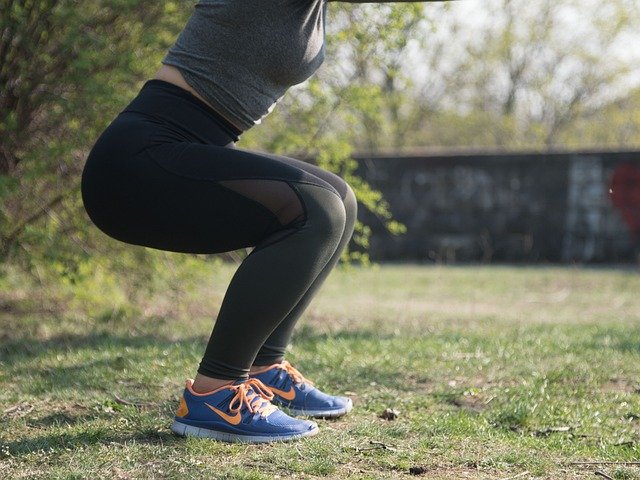Sportswear: Function, Styles, and Everyday Wear
Sportswear covers a wide range of garments designed to support movement, comfort, and durability. Originally created for athletic performance, sportswear now overlaps with everyday clothing and fashion, influencing what people choose for workouts, commuting, and casual settings. This article explains key differences between performance-focused activewear and style-led athleisure, describes materials and construction, and considers how sportswear fits into broader clothing and fashion trends worldwide.

What defines modern sportswear?
Modern sportswear is clothing engineered for physical activity, combining ergonomic design with fabrics that manage moisture, stretch, and temperature. Typical items include performance tops, shorts, leggings, and footwear built with seams, cuts, and features that reduce chafing and allow range of motion. Beyond pure function, design aspects such as reflective details, zip pockets, and ventilation panels are common. The definition has broadened: buyers expect a balance of durability, ease of care, and adaptable style suitable for both exercise and daily routines.
Sportswear also has technical classifications—compression, insulated, or breathable layers—each intended for specific conditions or sports. Brands and manufacturers often label garments by activity (running, yoga, training) to guide fabric and fit choices. This product segmentation helps consumers identify clothing that matches the intensity and environment of their activity, from high-sweat cardio to low-impact stretching.
How does sportswear fit into everyday clothing?
Sportswear increasingly blends into everyday clothing choices, as people prioritize comfort and practicality while moving through fragmented days. Items such as sweatshirts, hoodies, soft-shell jackets, and stretch leggings are now commonplace outside gyms. Practical pockets, wrinkle-resistant fabrics, and quick-dry finishes make sportswear items convenient for travel, commuting, and home life in addition to workouts.
This crossover has implications for wardrobes: consumers curate pieces that perform under varied conditions and require less frequent replacement. The adaptability of sportswear also encourages minimalist packing and capsule wardrobes for people who mix work, errands, and exercise. Retailers respond with hybrid collections that emphasize both function and versatility.
What role does sportswear play in fashion?
In contemporary fashion, sportswear influences silhouette, material choice, and styling. Designers and brands have incorporated athletic lines, technical fabrics, and sporty details onto runways and in street fashion. This exchange has normalized looser cuts, elasticated waists, and layered looks inspired by training and outdoor apparel. Fashion cycles borrow colorways and logos, while sportswear borrows tailoring and premium finishes.
The fashion impact goes beyond aesthetics: collaborations between sports brands and fashion houses raise visibility for technical innovations and create limited-run pieces that emphasize design. As a result, sportswear can signal lifestyle and identity—whether someone prefers a performance-first approach, a fashion-forward hybrid, or a practical, no-frills wardrobe.
How is activewear designed for performance?
Activewear focuses on supporting movement and physiological regulation. Key design choices include flatlock seams to prevent irritation, gussets for better articulation, and four-way stretch fabrics for unrestricted motion. Materials often combine synthetic fibers—like polyester and elastane—with treatments for moisture-wicking and odor control. Layering systems address thermal needs: base layers move sweat away, mid-layers insulate, and outer shells block wind and rain.
Performance testing influences product development: fabric breathability, compression levels, and seam placement are validated through athlete feedback and lab measures. Sizing and fit are tuned to activity type—compression garments support circulation, while relaxed fits emphasize comfort and airflow. These design principles ensure activewear performs reliably during exercise and helps reduce injury risk when chosen appropriately.
How does athleisure bridge function and style?
Athleisure sits at the intersection of sportswear and fashion, offering garments that are both comfortable and stylistically versatile. It prioritizes silhouettes and details that translate from gym to social settings—clean lines, subtle logos, and elevated fabrics. Athleisure pieces often emphasize softness and drape while retaining some technical features like stretch or moisture management.
Consumers gravitate toward athleisure because it simplifies dressing and supports varied daily activities. The category spans casual basics (sweatpants, tees) to more polished options (structured joggers, bomber jackets) that work in offices with relaxed dress codes. Athleisure shifts purchasing priorities toward multi-use items, encouraging investment in higher-quality pieces that combine wearability with a contemporary look.
Conclusion
Sportswear has evolved from strictly functional athletic gear to a broad category that includes performance-focused activewear, everyday clothing alternatives, and fashion-driven athleisure. Understanding the differences in design, materials, and intended use helps consumers choose garments that match activity level and lifestyle. Whether prioritizing technical performance or versatile style, the current sportswear landscape offers options that blend comfort, utility, and contemporary design without requiring compromise.






